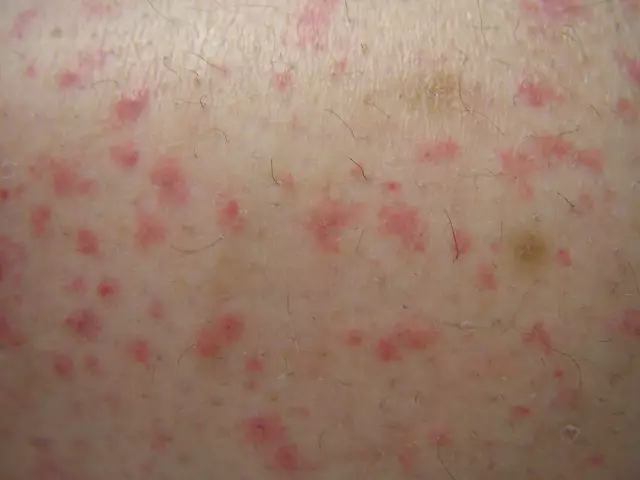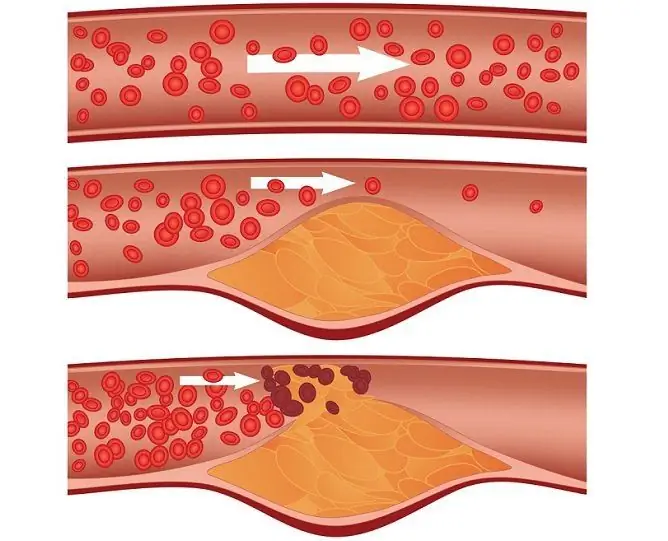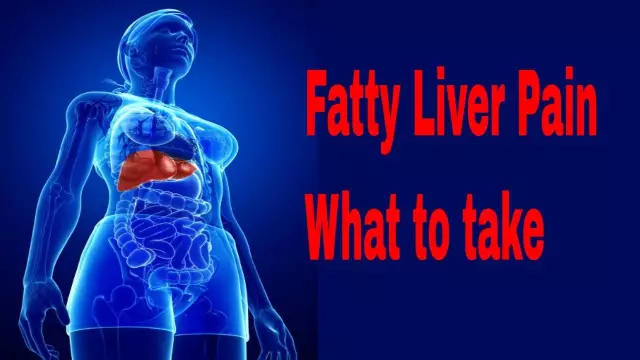- Author Rachel Wainwright [email protected].
- Public 2023-12-15 07:39.
- Last modified 2025-11-02 20:14.
Purpura
Brief description of the disease

Purpura is characterized by the presence of small capillary hemorrhages on the skin. Spot hemorrhages are called petechiae, in the form of stripes - vibeks, small-spotted - ecchymosis, large-spotted - bruising.
The rash is most commonly seen on the lower extremities. Their color is initially red or burgundy, but over time changes to purple, brown, green and yellow (7-10 days).
Causes of purpura
Purpura can be associated with a variety of diseases, but the mechanism of development remains unchanged. In general, the main cause of purpura is a tendency to bleed due to certain pathological processes, such as damage or deficiency of platelets, blood clotting disorders of an infectious nature or arising from taking certain medications, pathological changes in the vascular wall.
Idiopathic thrombocytopenic purpura
Thrombocytopenic purpura is a disease associated with a decrease in the number of platelets in the blood. It can be either independent or accompany a number of other diseases. Thrombocytopenic idiopathic purpura is a childhood disorder that manifests itself predominantly before the age of 14 years. More common in girls.
The mechanism of development of the disease is as follows. Under the influence of any infection or drugs, the normal properties of platelets change. The body's immune system takes them for foreign cells and produces antibodies that block them. These platelets are captured by the cells of the spleen and destroyed in it. Thrombocytopenia develops.
The nature of the rash is dominated by bruises and petechiae. With thrombocytopenic idiopathic purpura in children, bruises can occur even from minor blows, in most cases appear on the legs. Petechiae can be both single and multiple, appear on the legs.
Also, the symptoms of the disease are hemorrhages and bleeding. Most often, the gums and nasal mucosa are prone to bleeding. In adolescent girls, thrombocytopenic purpura can lead to profuse uterine bleeding.
Idiopathic thrombocytopenic purpura in children may result in complete recovery or become chronic. The chronic form of the disease is characterized by repeated periods of bleeding. The main treatment for the chronic form is the removal of the spleen. In the acute form of the disease, drugs are prescribed to destroy antibodies that block platelets, as well as drugs to stop bleeding. With a severe form of the disease and heavy bleeding, blood transfusion is indicated.

The main measure for the prevention of exacerbations in the chronic form of thrombocytopenic purpura in children is the elimination of foci of infection (caries, tonsillitis, etc.). After an illness, the child must be observed by a hematologist for five years.
Thrombotic thrombocytopenic purpura
This disease is characterized by increased formation of blood clots and occurs at any age. It can occur after the administration of vaccines, taking medications, and accompany a number of other diseases (meningococcal infection, malignant tumors).
The harbingers of the disease are headache, vomiting or nausea, blurred vision, acute abdominal pain. Bruises and petechiae appear, the development of neurological and mental disorders is possible. There is kidney damage, enlargement of the liver and spleen. Thrombotic purpura can last for several days or several weeks. Death is possible due to vascular lesions of the heart, brain and kidneys (20-30%). The main treatment for thrombotic purpura is plasma exchange of own plasma for donor plasma.
Schönlein-Genoch purpura (vascular purpura)
This disease is manifested by inflammation of the vessels of the skin and organs of the body. The causes of the occurrence may be medication, viral or bacterial infections, a reaction to the introduction of certain vaccines. Most often, the disease occurs before the age of 20.
The onset of the disease is accompanied by an increase in body temperature, then a small-spotted rash appears on the legs, buttocks, shoulders and joints. There is also pain and swelling of the joints, sudden abdominal pain, vomiting, loose stools, and gastrointestinal bleeding may occur. Damage to the kidneys, heart, and sometimes the central nervous system occurs.
Treatment for Schönlein-Henoch purpura is aimed at blocking the creation of new immune complexes. A hypoallergenic diet and bed rest are also prescribed. The illness usually lasts 2 to 4 weeks and then heals.
YouTube video related to the article:
The information is generalized and provided for informational purposes only. At the first sign of illness, see your doctor. Self-medication is hazardous to health!






